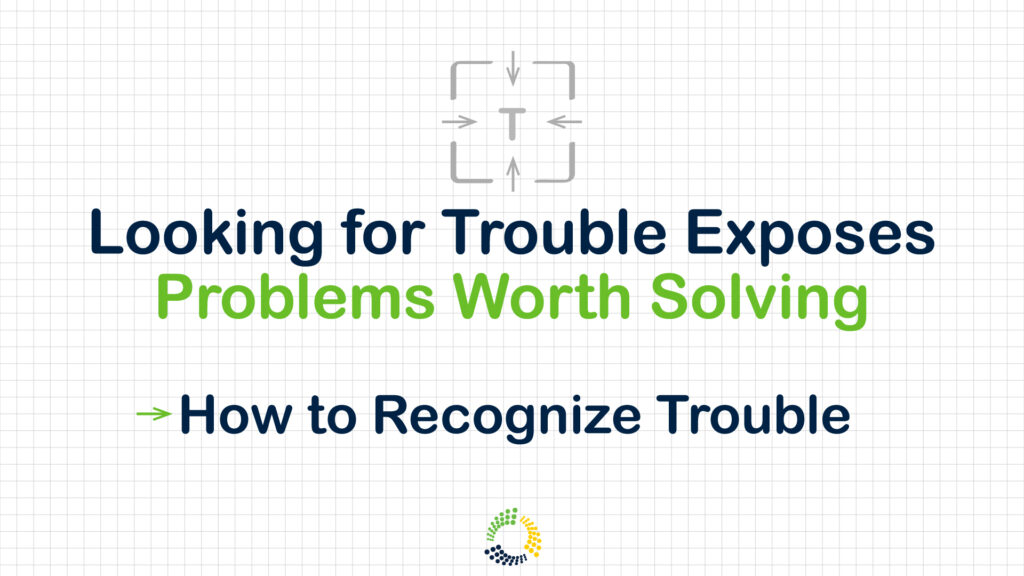
This article is for Innovators who want to improve their problem finding capability. Trouble, the user experience that something isn’t right and they don’t like it, is an indicator that there is a problem worth solving within an existing solution. Trouble is observable and quantifiable if you know what to look for.
The world is full of solutions. In fact, there is an existing solution for everything that a person wants to do or accomplish. But, there is no such thing as a perfect solution. Every solution creates a user experience that has some kind of trouble that must be dealt with.
Trouble is not the same as a problem. Trouble is an effect, with two distinguishing indicators, that is caused by a problem.
Trouble involves both a cognitive judgement and an emotional response. The cognitive judgement ranges from “Using this solution is more difficult than it needs to be” to “This solution doesn’t work”. The corresponding emotional response ranges from “I’ll deal with it” to “I’ve got to do something different”.
The judgement identifies problems with the existing solution. The emotional response tells you whether the problem is worth solving.
How to Recognize Trouble
Understanding the different kinds of trouble you can experience helps you recognize the sources of trouble independent of the emotional response. The source of trouble is an indicator of the type of solution that will solve the problem.
Trouble with an existing solution can be:
- an unsatisfying event
- using a solution can be complicated because it involves doing something that is difficult to do
- using a solution can be complex because it involves doing something that is difficult to understand
- too much variance in the user experiences
- sometimes the solution works as expected, sometimes it doesn’t
- the solution always delivers the same experience, but it is different than expected
- a breakdown
- the solution doesn’t work
- too much uncertainty
- the solution rarely provides the same experience twice
- unrealized benefits
- the solution promises certain benefits that aren’t delivered
- unresolved challenges
- realizing a solution’s benefits requires performing other unspecified activities
- a constraint
- there is an unspecified factor that limits the user experience
- an anomaly
- something unusual, unexpected, abnormal, or peculiar occurs when using the solution
- a paradox
- how to improve the user experience is difficult to understand because it involves opposing factors
Each type of trouble points you in the direction of a possible solution. Understanding the cause of the trouble experienced quickly helps you separate probable solutions from the universe of possible solutions.
Conclusion
Trouble is an indication that something isn’t working for the user and they are not OK with it, causing both a cognitive and emotional response.
Identifying problems worth solving requires understanding the type and severity of the trouble being experienced by the user of an available solution.
Trouble focuses the Innovator on the need and desirability for changing the available solution by solving problems worth solving.
🌱
Problems cause trouble
Eliminating trouble
Problems worth solving
-Innovation Haiku, Kevin A Fee, January 24, 2024
